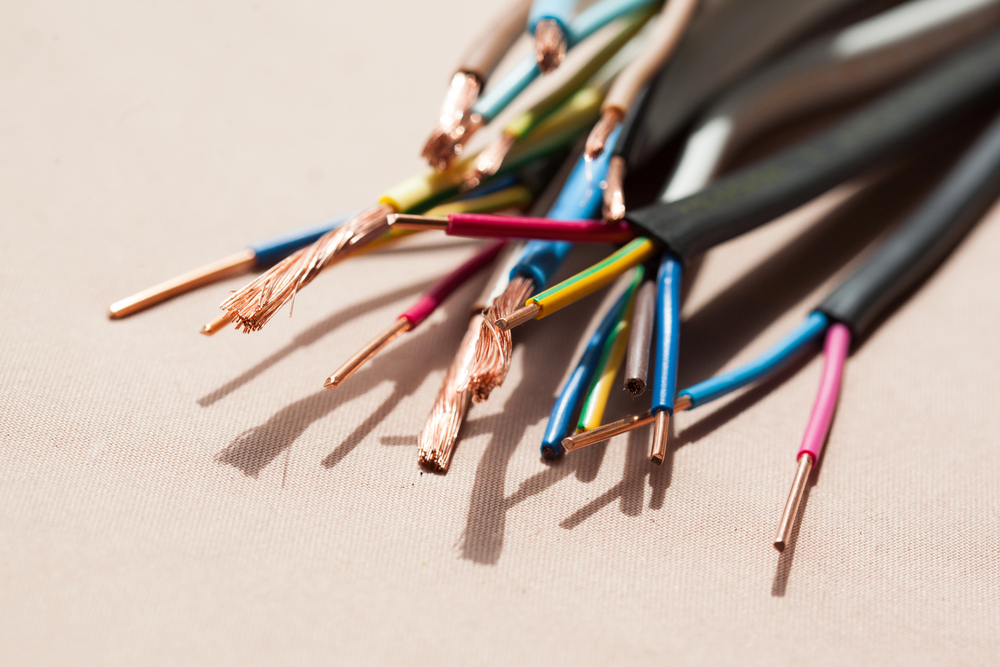Your home’s electrical system is the unsung hero behind your daily comfort and convenience. From powering your lights and appliances to providing a safe and functional living environment, electrical wiring plays a critical role. But with various types of wiring available, choosing the right one for your home can be overwhelming. Let’s shed some light on this topic and explore the different wiring options to ensure your home is equipped with the best possible electrical infrastructure.
Understanding Different Types of Wiring: Copper Wiring
Copper wiring has long been the standard for electrical systems due to its exceptional properties. Renowned for its high conductivity, copper efficiently transmits electricity with minimal energy loss. Its durability and resistance to wear and tear make it a reliable choice for both short and long-term electrical needs. Additionally, copper’s versatility allows it to be easily shaped and molded, making it adaptable to various installation requirements.
While copper wiring offers numerous advantages, it’s not without its drawbacks. The cost of copper can be higher compared to other wiring materials, and its weight can present challenges during installation, especially in large-scale projects. Despite these factors, copper’s superior performance often justifies the investment.
Thanks to its exceptional qualities, copper wiring remains the preferred choice for most residential and commercial applications. Its ability to handle diverse electrical loads and its long-lasting performance make it a dependable backbone for any electrical system.
Aluminum Wiring: A Closer Look
While aluminum wiring offers certain advantages, it also presents unique challenges. Its lightweight nature makes it easier to handle during installation, and its cost-effectiveness can be appealing for budget-conscious projects. However, aluminum is prone to corrosion and has a tendency to expand and contract with temperature changes. These characteristics can lead to loose connections and increased fire risks if not handled properly.
Due to these inherent issues, aluminum wiring has largely been phased out in new residential construction. However, it can still be found in older homes. If your home was built between the late 1960s and early 1970s, there’s a possibility it might have aluminum wiring. While not inherently unsafe, aluminum wiring requires special termination techniques and regular inspections to mitigate risks.
While aluminum wiring is still used in some large-scale commercial projects due to its cost-effectiveness and weight advantages, it’s crucial to consult with a qualified electrician to ensure proper installation and ongoing maintenance.
NM-B (Non-Metallic Sheathed Cable): Flexibility and Ease of Installation
NM-B cable, often referred to as Romex, is a popular choice for residential wiring due to its ease of installation and flexibility. Its non-metallic sheath allows for easy bending and maneuvering around corners, making it a preferred option for many homeowners and electricians. Additionally, NM-B cable is typically lighter than other wiring types, simplifying the installation process.
However, NM-B cable has its limitations. Its non-metallic sheath makes it susceptible to damage from physical impacts or exposure to moisture. As a result, it’s not suitable for use in wet locations or areas prone to physical abuse.
Given its characteristics, NM-B cable is primarily used for interior residential wiring, where it can be protected from the elements and potential damage. It’s a versatile option for most household electrical needs, but it’s essential to consider its limitations when planning your electrical system.
UF-B (Underground Feeder) Cable: Built for Braving the Elements
UF-B cable is specifically designed for outdoor and underground installations. Its durable construction makes it resistant to moisture, harsh weather conditions, and the rigors of direct burial. This makes it an ideal choice for powering outdoor outlets, lighting, and other electrical components.
While UF-B cable offers superior protection against the elements, it comes at a higher cost compared to NM-B cable. The added durability and weather resistance come with a premium price tag.
Despite the higher cost, UF-B cable is an essential choice for any outdoor electrical project. Its ability to withstand the challenges of the external environment ensures the safety and longevity of your electrical system.
Factors to Consider When Choosing Wiring
Selecting the right wiring for your home involves careful consideration of several factors. Let’s break down the key elements to help you make an informed decision:
- Home Age and Construction Type: The age of your home can significantly influence the type of wiring it contains. Older homes might have aluminum wiring, while newer ones typically use copper. The construction type, whether it’s wood-framed or masonry, can also impact wiring choices.
- Electrical Demands and Load Requirements: Your home’s electrical load, determined by the number and type of appliances and devices, plays a crucial role. High-demand appliances like electric water heaters, dryers, and air conditioners require wiring capable of handling heavy loads.
- Local Building Codes and Regulations: Adhering to local building codes is essential for safety and legal compliance. These codes outline the acceptable types of wiring, installation methods, and permit requirements.
- Budgetary Constraints: Wiring materials vary in cost, and your budget will influence the type of wiring you can choose. It’s important to balance cost with the long-term benefits and safety considerations.
- Environmental Factors: Factors like humidity and temperature can affect the performance of wiring materials. For example, in areas with high humidity, moisture-resistant wiring might be necessary.
By carefully evaluating these factors, you can make an informed decision about the most suitable wiring for your home’s specific needs.
Wiring for Specific Applications: Tailoring Your Electrical System
Choosing the right wiring for different areas of your home is essential for safety and functionality. Let’s explore some specific applications and the wiring best suited for them:
- Kitchens and Bathrooms: These areas require special consideration due to the presence of water and potential electrical hazards. Moisture-resistant wiring like UF-B or armored cable is recommended for these spaces. Additionally, GFCI outlets are mandatory in areas where water is present to protect against electrical shocks.
- Basements and Attics: Basements and attics often present unique challenges. Basements can be susceptible to moisture, while attics experience temperature fluctuations. Using moisture-resistant wiring like UF-B or armored cable is advisable for these areas. Proper ventilation and insulation can also help mitigate environmental factors that could affect wiring performance.
- Outdoor Installations: When wiring for outdoor applications, durability and weather resistance are paramount. UF-B cable is the ideal choice due to its ability to withstand harsh conditions. Proper installation and protection from physical damage are crucial to ensure the longevity of your outdoor electrical system.
By carefully considering the specific needs of each area in your home, you can select the appropriate wiring type to create a safe and efficient electrical system.
When to Call a Professional Electrician
While some minor electrical tasks might seem DIY-friendly, it’s crucial to recognize the limitations of your expertise and the potential risks involved in electrical work. For any electrical project that goes beyond basic tasks like replacing a light switch or outlet, it’s highly recommended to enlist the services of a licensed electrician.
Professional electricians possess the knowledge, skills, and tools to handle complex electrical installations and repairs safely and efficiently. They are familiar with local building codes and regulations, ensuring your electrical system complies with all safety standards. Moreover, they can identify potential electrical hazards and address them proactively, protecting your home and family from unforeseen risks.
By hiring a qualified electrician, you gain peace of mind knowing that your electrical system is in good hands. They can provide expert advice, troubleshoot issues, and ensure your home’s electrical infrastructure is optimized for safety and performance.
Remember, electrical work is not something to be taken lightly. Investing in professional electrical services is an investment in your home’s safety and longevity.
In conclusion, choosing the right wiring for your home is essential for safety, efficiency, and long-term performance. By understanding the different types of wiring, considering your specific needs, and enlisting the expertise of a qualified electrician, you can create a reliable and safe electrical system for your home.
Conclusion
Choosing the right electrical wiring is crucial for the safety, efficiency, and longevity of your home’s electrical system. Understanding the different types of wiring available, such as copper, aluminum, NM-B, and UF-B, is essential for making informed decisions. Factors like home age, electrical demands, local codes, and budget should be carefully considered when selecting the appropriate wiring for specific applications.
While some basic electrical tasks can be DIY projects, it’s important to recognize the complexities and potential hazards involved in electrical work. For any electrical project beyond your expertise, consulting with a qualified electrician is highly recommended. Their knowledge and experience will ensure your home’s electrical system is safe, efficient, and compliant with all relevant codes and regulations.
By partnering with a professional electrician, you can have peace of mind knowing that your home’s electrical infrastructure is in good hands.

